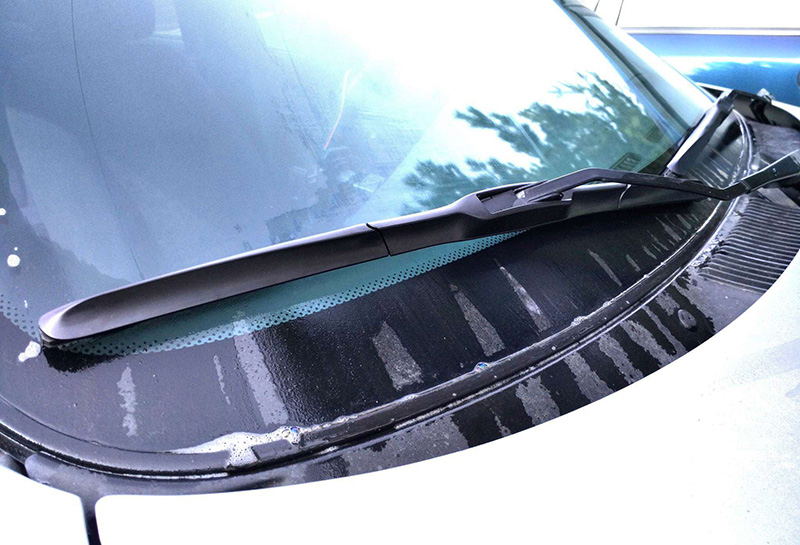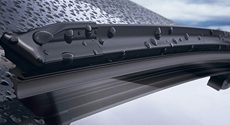How to Choose Best Wiper Blades for 2024?
Operating a vehicle during heavy rain is inherently stressful. Now, envision attempting this without the crucial aid of windshield wipers. Despite their seemingly simple design, windshield wipers are arguably one of the most vital safety components on any automobile in adverse weather conditions. Thus, it is imperative to ensure that they remain in optimal condition and are regularly updated as necessary.
You have likely encountered subpar wiper blades during your driving experiences. This common issue often stems from inadequate factory settings and standard dealer defaults. It can indeed be frustrating to make a significant investment in a new vehicle only to discover that the wiper blades deteriorate rapidly.
This no doubt has you wondering by now, which wiper blades are the best. Let’s save you time and money by choosing the best wiper blades for you with the following.
Our Top Picks
Types Of Wiper Blades
There are three common wiper blade styles: beam, hinged, and hybrid.
Wiper blades featuring a hybrid or beam design come equipped with a plastic cover engineered to inhibit the accumulation of snow and ice. These models are designed for optimal performance in all weather conditions, eliminating the need for seasonal replacement.
Hinged wiper blades feature a design with multiple pressure points along with a bridge or hinge mechanism. However, this design lacks protective covers for the joints, which can result in the accumulation of snow and debris. To ensure optimal performance during winter conditions, it is advisable to replace hinged wiper blades with winter-specific options such as hybrid or beam wiper blades when snowfall occurs.
Types Of Wiper Blade Connectors
It is also essential to identify the type of wiper blade connector your vehicle utilizes. Among the various attachment mechanisms, two prevalent types are the J-hook and the PTB 19mm top lock. While some wiper blades are designed with multiple attachments to accommodate a range of vehicles, others may be compatible with only one specific connector type unless an adapter is used.
How We Tested Wiper Blades?
To properly test these wiper blades, we wanted to simulate different wet weather conditions as accurately as possible.
- We installed each wiper blade on a test vehicle and tested it in both wet and dry weather. We evaluated how well they removed water and debris from the windshield.
- We evaluated the durability of each wiper blade by using it for an extended period of time in adverse conditions. We looked for signs of wear, such as streaking, skipping, or squeaking.
- We tested the flexibility and responsiveness of the wiper blades by running them over windshields of various shapes and sizes. We evaluated how well they adapt to different curves and angles.
- We tested how easy each wiper blade was to install and remove to evaluate how user-friendly they were.
- Finally, we compared the performance of each wiper blade to a control group to determine which blades performed the best and offered the best value for money.
Are expensive wiper blades worth it?
Investing in premium wiper blades frequently justifies the cost, as these blades are generally constructed from superior materials and offer higher build quality. This enhanced craftsmanship often translates to improved performance and durability.
High-quality wiper blades typically deliver a clearer, streak-free wipe and exhibit greater longevity compared to their more affordable counterparts.
Over time, allocating additional budget for top-tier wiper blades can prove to be economically advantageous while ensuring safer driving conditions.

How do I find out what wiper blade I need?
When searching for the best wiper blades, some important factors to consider are performance, durability, and installation.
Performance
We installed each new wiper blade and tested it at the same speed. We recorded the windshield from the inside while the blades were running and viewed the footage in slow motion, rating each blade on its ability to carry water without leaving streaks. The blades that were able to remove the most water and leave the fewest streaks scored highest in this category.
Durability
The lifespan of a windshield wiper blade can depend on several factors besides the blade itself. These factors include climate and how often the blade is used. That’s why we considered a large number of customer reports, rather than our single experience, when making this rating.
Installation
How easy or difficult it is to install a windshield wiper blade may depend more on your vehicle (and the type of wiper blade connector you have) than on the wiper blade itself.
There are several types of wiper blade connectors, and not every wiper blade will fit every vehicle. However, some wiper blades are compatible with a wider variety of wiper blade connectors than others. Wipers that work right out of the box and fit a wider variety of attachment types score higher in this category.
Traditional Metal
While traditional metal frames were the norm fifteen years ago, they pale in comparison to the standards set by today’s wiper frame technology. If anything, they are not designed to handle high speeds and long life, which makes them unconventional.
You’ll see this old-school design on most vehicles pre-2005 or the odd cheap new car. That’s because they’re cheap, and technically they’ll get the job done (but not guaranteed to do it well)
Hybrid
You’ll find hybrid wiper blades on most 2005-2016 Japanese vehicles. These are essentially a traditional wiper frame with the addition of an outer plastic casing. The shaped outer casing goes some way towards reducing rust and corrosion, as well as making high speeds more manageable.
However, as is the case with traditional metal wiper frames, the hybrid alternative doesn’t quite stack up to modern design standards. While they do the job well when fitted as new, refills are hard to locate outside of dealerships and are generally quite expensive as a result.
Rubber vs. silicone blades: Which is better?
Silicone wipers are said to last longer than rubber wipers, though this is not widely agreed upon. One advantage of silicone wipers is that they leave hydrophobic silica behind as they wipe, which may improve performance over time. Silicone wipers may also be able to withstand extreme heat and cold better than rubber wipers, which may extend their lifespan depending on where you live.
So who wins in the silicone vs. rubber wiper battle? Silicone wipers simply can’t compare to high-quality premium natural rubber wipers (especially those that are coated with graphite and embedded with Teflon).
In terms of performance, even the best silicone wipers will leave smudges and fog on your windshield. In terms of durability, silicone wiper blades will wear out much faster than natural rubber wiper blades because they can’t handle temperature fluctuations.
On the other hand, natural rubber wiper blades are now a must-have on nearly every new car (and on the shelves of all major auto stores). They are the most durable and best-performing wiper blades, producing the least streaking, squeaking, or smudging, especially when compared to silicone wiper blades.
How Often To Replace Wiper Blades?
Drivers who live in climates that are more prone to rain will naturally use their wipers more often than those who live in drier climates. The material of the wipers is also important, as some are more durable than others. An example is silicone, which is a more durable material that will outlast traditional rubber wipers.
A good rule of thumb is to replace them every 12 months. But since it’s easy to notice when wiper blades are wearing out, it’s really up to you. If your wiper blades start to streak, squeak, flutter, or just don’t remove water as well as they used to, it’s time to replace them.






